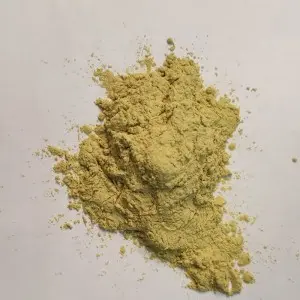Nov . 12, 2024 04:35 Back to list
kiwi pollen
The Wonders of Kiwi Pollen A Natural Treasure
Kiwi, scientifically known as Actinidia deliciosa, is a small, brown, fuzzy fruit that bursts with flavor and is celebrated for its health benefits. However, one often-overlooked aspect of the kiwi plant is its pollen. Kiwi pollen has been gaining attention not just for its role in the plant's reproduction but also for its potential health benefits and applications in various fields.
The Biology of Kiwi Pollen
Kiwi pollen grains are tiny, typically measuring around 10 to 25 micrometers in diameter. They are vital for the fertilization process, as kiwis are dioecious plants, meaning they have separate male and female individuals. The male kiwi vines produce the pollen necessary for fertilizing the flowers of the female plants, allowing for fruit development. Each male plant can produce millions of pollen grains, which are transported by wind and pollinators to reach female flowers.
The structure of kiwi pollen is fascinating. The grains are designed to withstand various environmental conditions and are equipped with a tough outer layer, called the exine, which protects the genetic material inside. This resilience makes kiwi pollen an interesting subject of study for scientists.
Nutritional Benefits
Beyond its reproductive role, kiwi pollen is rich in nutrients and beneficial compounds. It contains proteins, amino acids, vitamins, and minerals, making it a potential superfood. Some studies suggest that kiwi pollen may possess antioxidant properties, helping to protect cells from damage caused by free radicals. This potential could have implications for reducing the risk of chronic diseases, including heart disease and cancer.
Furthermore, kiwi pollen has been noted for its anti-inflammatory properties. Chronic inflammation is linked to many health issues, including arthritis and cardiovascular diseases. By incorporating kiwi pollen into one’s diet, individuals may find a natural way to mitigate inflammation and improve overall health.
kiwi pollen

Applications in Beekeeping
Kiwi pollen is not just beneficial for human consumption; it is also essential in the world of beekeeping. Bees play a crucial role in the pollination of kiwi plants, and in return, they collect the pollen as a food source. Beekeepers often value kiwi pollen for its nutritional content, which can enhance the health and productivity of bee colonies. Some beekeepers even harvest the pollen to sell it as a dietary supplement or health food.
The relationship between kiwi plants and bees is a perfect example of nature's interconnectedness. By planting more kiwi vines, farmers can promote bee health and biodiversity, which in turn supports the environment.
Culinary Uses
Kiwi pollen’s unique flavor profile also opens up culinary possibilities. While not commonly found in mainstream markets, it can be used as a flavor enhancer in various dishes. With a slightly sweet and floral taste, it can be sprinkled over salads, blended into smoothies, or incorporated into baked goods, adding both flavor and nutritional value.
Conclusion
Kiwi pollen is a remarkable natural resource that deserves more attention for its myriad benefits. From its vital role in the reproduction of the kiwi plant to its potential health advantages, this tiny grain packs a powerful punch. As more research emerges, we may find even more ways to utilize kiwi pollen in our diets and industries. Embracing this natural treasure could lead to not only improved health for individuals but also a more sustainable agricultural practice, showcasing the importance of biodiversity in our ecosystems. As we continue to explore and appreciate the wonders of nature, kiwi pollen stands out as a small yet significant component of our world.
-
High-Viability Male Kiwipollen for Sale | Boost Yield
NewsAug.06,2025
-
Eco Fruit Paper Bags for Peak Freshness | Durability Focused
NewsJul.31,2025
-
Pollen Peach Tree for Pure Pollination and High-Quality Peach Pollen
NewsJul.30,2025
-
Premium Cherry Pollen for Pure Pollination & Different Types
NewsJul.30,2025
-
Artificial Pollination Solutions for Various Plant Pollen Types
NewsJul.29,2025
-
Artificial Pollination Solutions for All Plant Pollen Types
NewsJul.29,2025